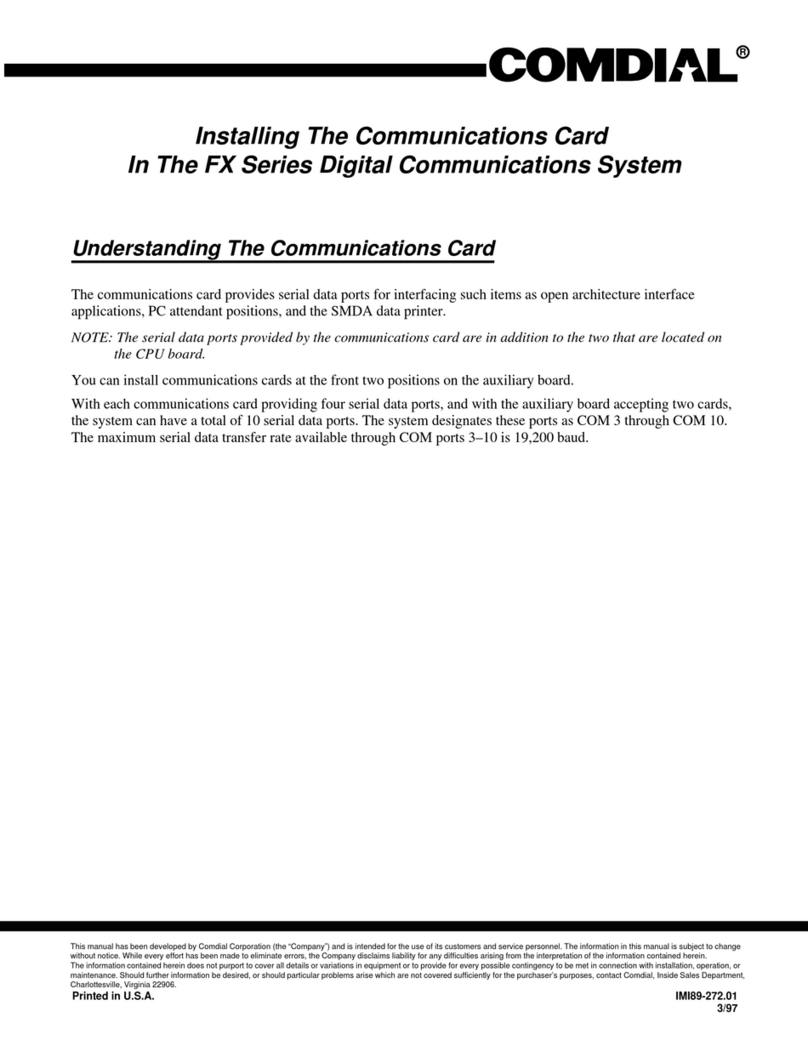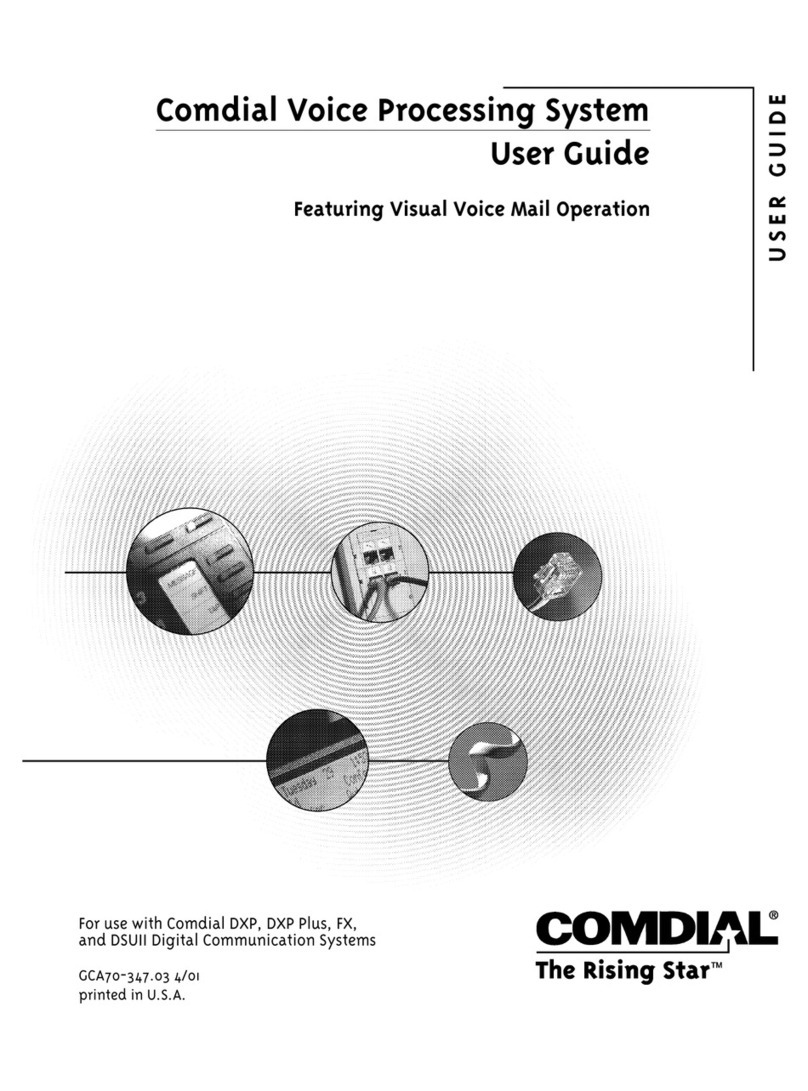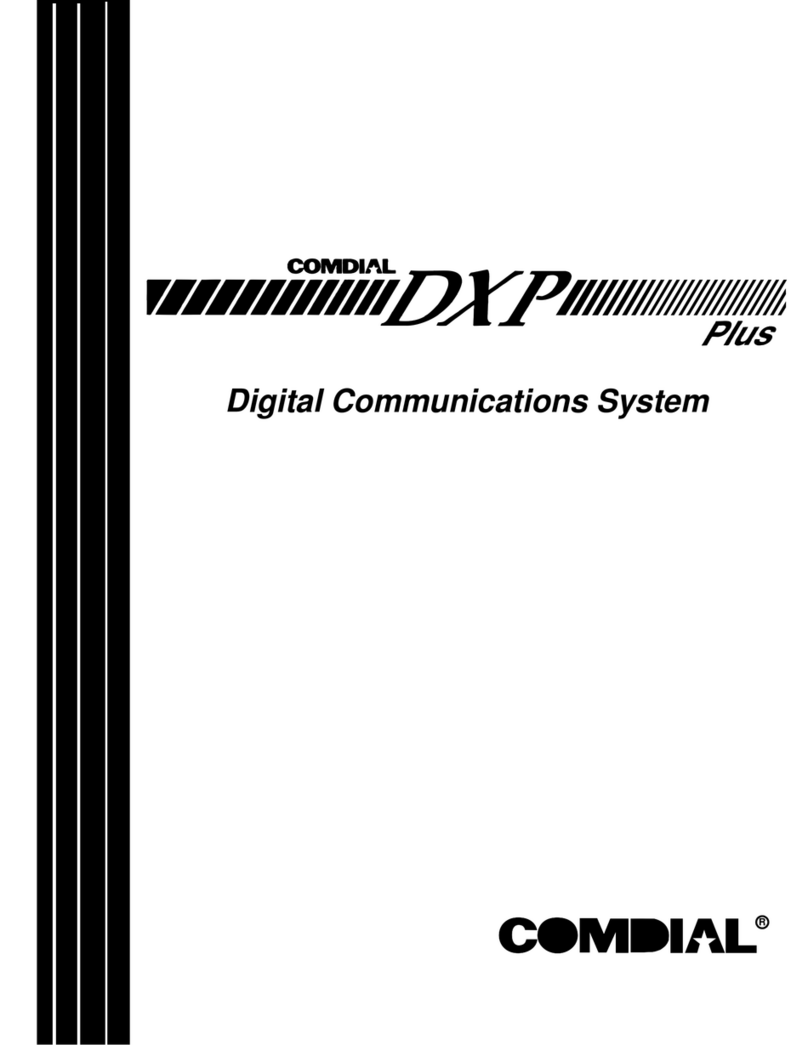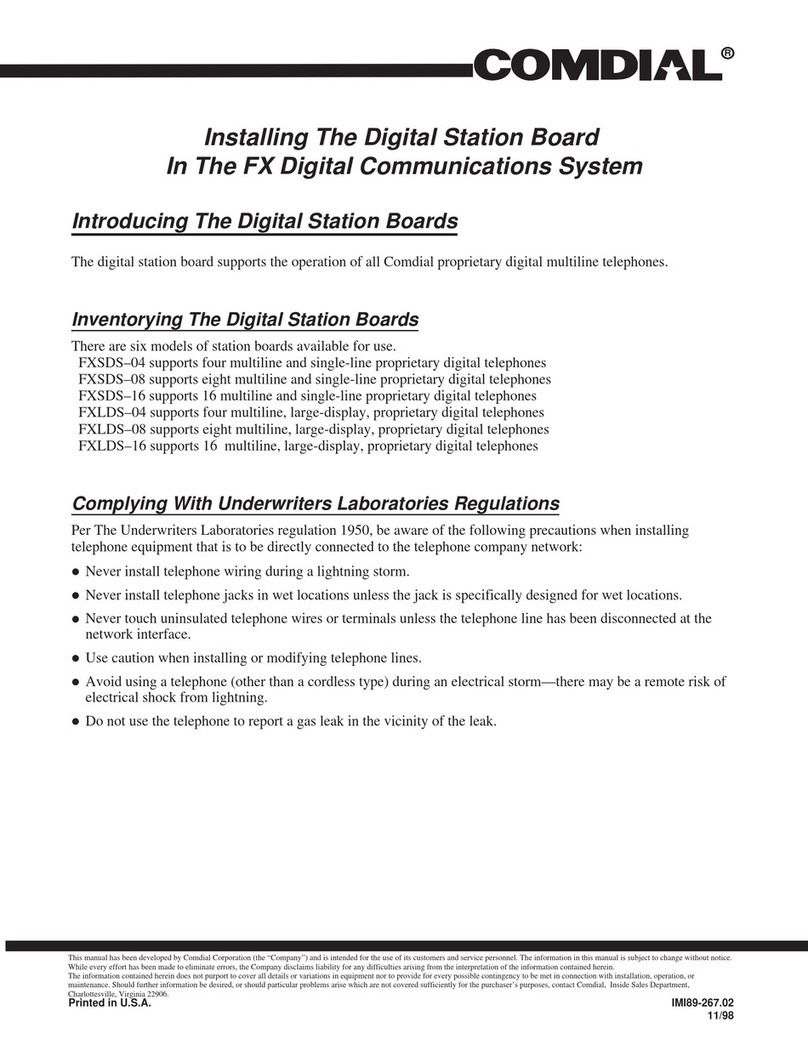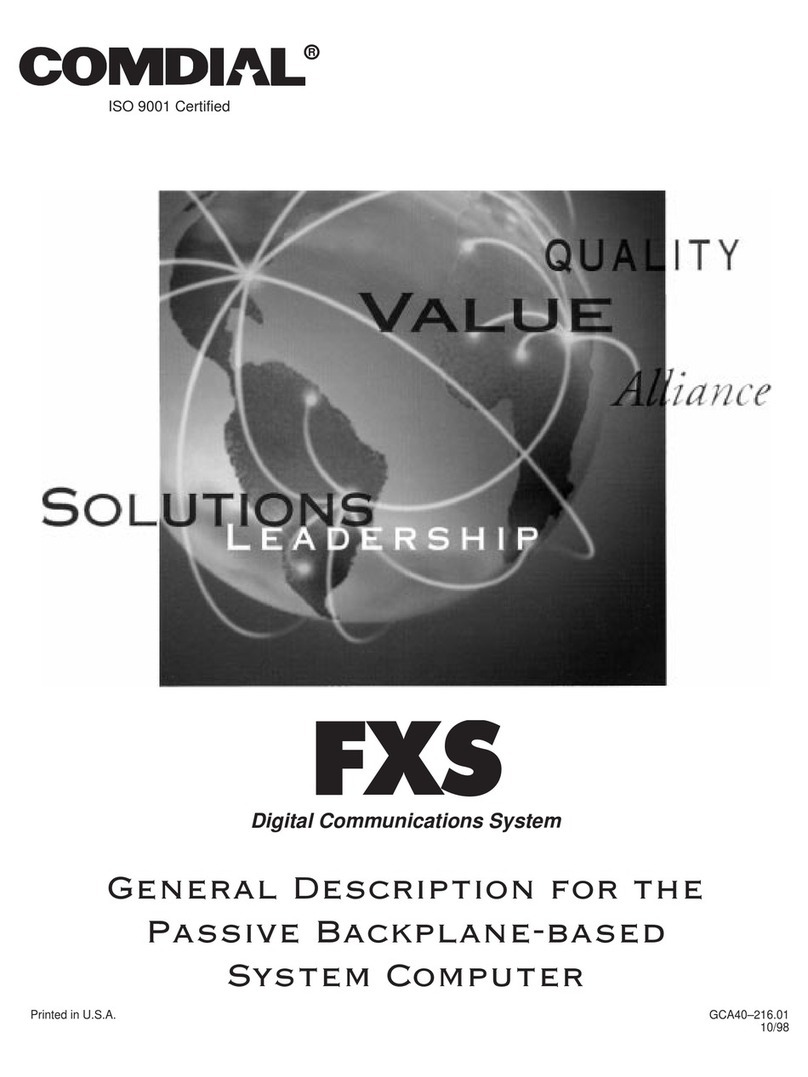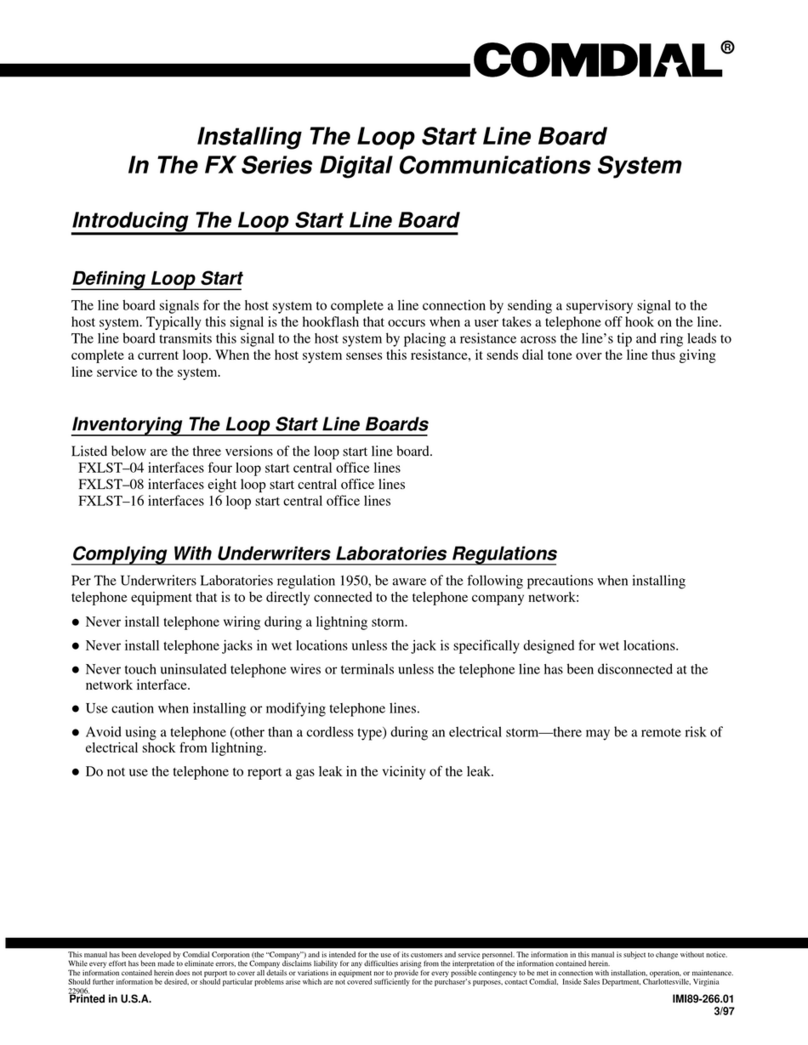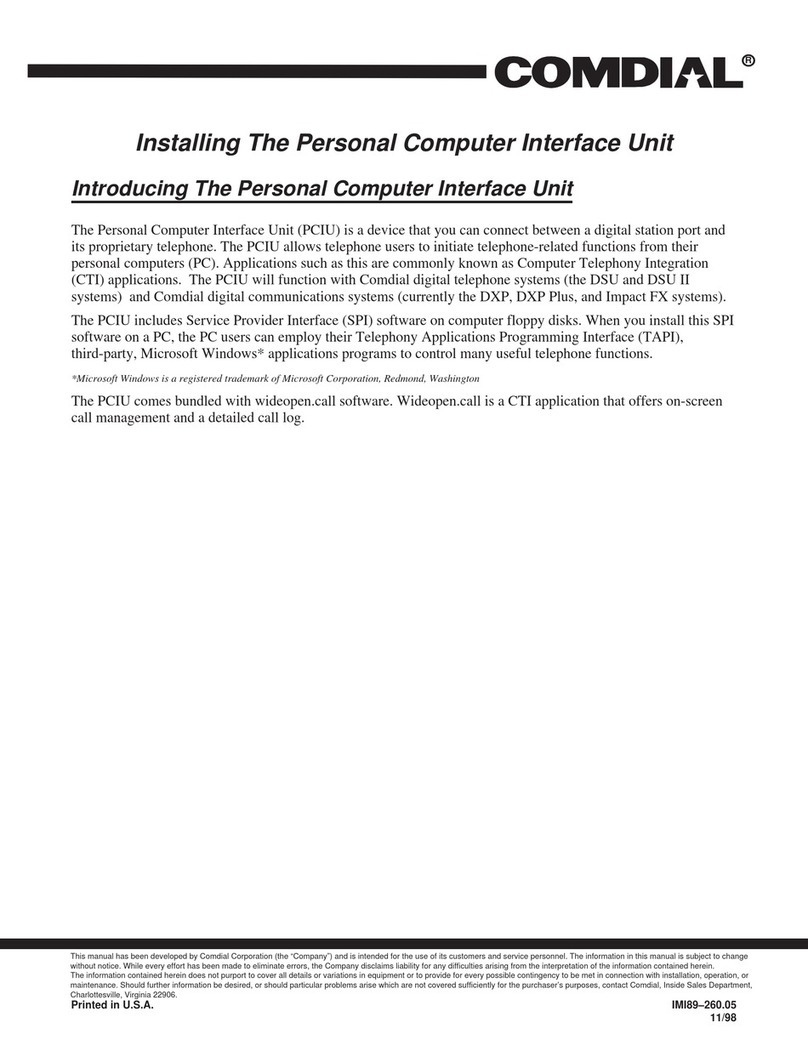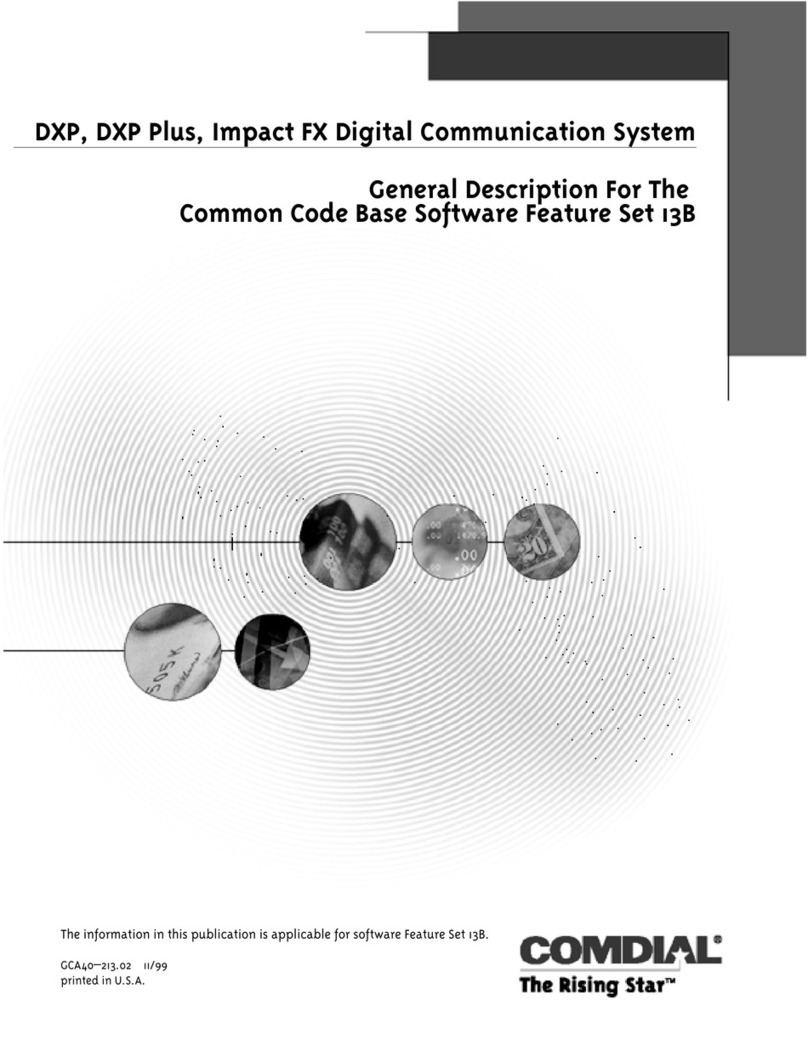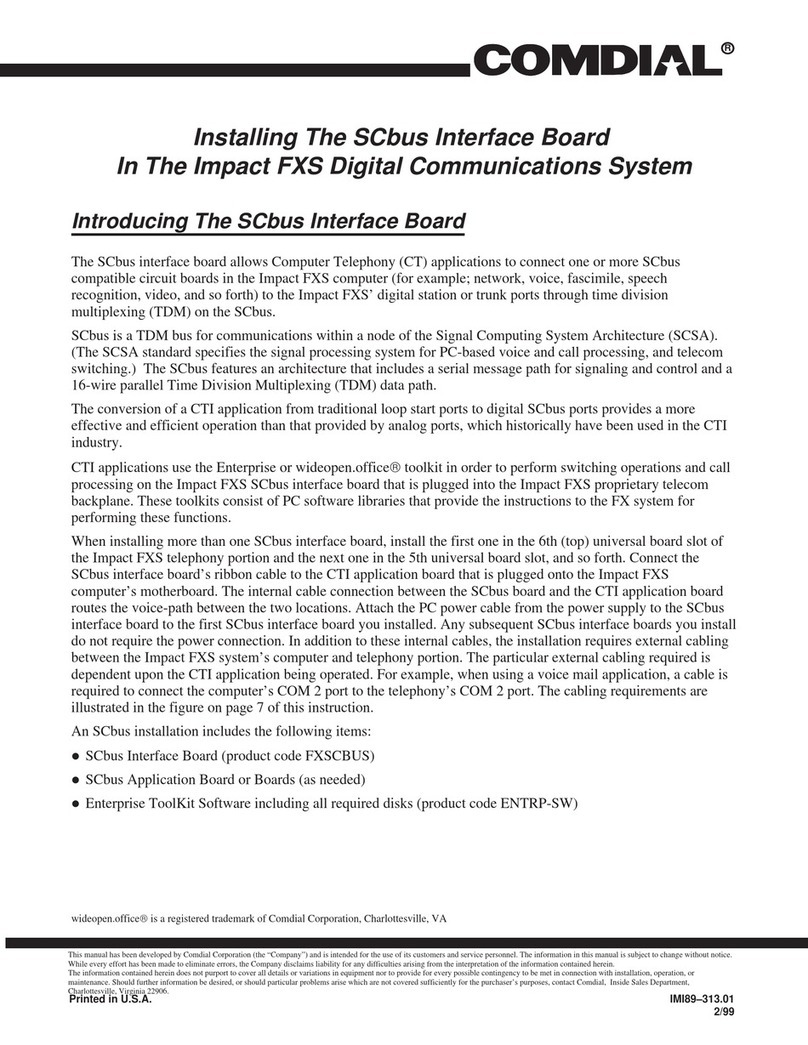
SECTION 3
GENERAL INFORMATION
CONFIGURATION
The model XE electronic key telephone system
consists of an electronic Key Service Unit (KSU), also
referred to as common equipment, dedicated
electronic key telephones, and interconnecting wiring
consisting of small, 4- or 6-conductor, twisted-pair
cable.
The station and line capacity of the various family
members are per the following chart.
MODEL CO/PBX STATION
NO. CAPACITY CAPACITY
N0308 3 8
N0616 6 16
N0820 8 20
N1024 10 24
The model XE telephone system is full featured, and
supports a specially designed group of key telephones
(model 67xxx-xx series) described below. In addition,
it also supports the following ExecuTech multiline
telephone models 6614E, 6614T, 6620E, 6620T, 6414
and 6414S. (If a model 6414S-xx is used, a moderate
volume setting may be required to avoid the possibility
of a squeal being sounded through the station speaker
during call announce and/or background music
operations.)
An optional kit supplied clock/chip socket assembly
can be added to allow the model XE system to support
the operation of a model 6600S or 6600E ExecuTech
LCD speakerphone in addition to the telephones
mentioned above. The product code for this LCD
upgrade kit is PCCXE. This kit is available through
normal distribution channels for field installation.
When this LCD upgrade kit is installed in an XE
system, the model number designation is changed
from Nxxxx to Kxxxx. The new model numbers
become as follows: K0308, K0616, K0820 and K1024.
The LCD speakerphone will provide the following
feature displays for the user’s convenience:
•Time and Date
•Call Duration Time
•Do Not Disturb
•Line Identification When Chosen Followed By The
Numbers Dialed
•Intercom Calling Party Identification
•Intercom Number Dialed
•Re-display Of Call Time Of Last Call When HOLD
Key Is Pressed
A software upgrade kit is available for field installation.
The EPROM chip supplied in this kit will revise the
operating system software of the XE system to the
latest factory issued level. The product code for the
software upgrade kits are:
PSUXE-1 for N0308 and N0616
PSUXE-2 for N0820 and N1024
These kits are available through normal distribution
channels.
COMMON EQUIPMENT DESCRIPTION
The common equipment is a fully electronic device. It
is essentially a special purpose computer system
acting as a communications controller between central
office (CO), private branch exchange (PBX), or
CENTREX supplied lines and the proprietary
telephone stations. The software architecture of the
common equipment provides complete system support
and great flexibility of operation.
The common equipment is contained in a functional,
modern-style metal housing of contemporary design in
keeping with the needs of the modern office
environment. It is engineered to be wall or rack
mounted. The outline dimensions of the common
equipment cabinet are illustrated in Figure 1-1.
STATION DESCRIPTION
The model 67xxx-xx telephone stations are electronic,
microprocessor-controlled devices. They allow not
only multiline pickup but also single button access to
features available from the serving CO, PBX, or
CENTREX switch as well as the common equipment.
The outline dimensions of the system stations are
illustrated in Figure 1-2 and the images are illustrated
in Figure 1-3.
The stations provide the following features:
•Full modular connection
•4 fixed feature buttons with indicators
•SPKR
•MUTE
•HOLD
•ITCM
•2 fixed feature buttons without indicators
•TAP
•TRANS/CONF
•Programmable buttons with and without indicators
•7-foot, 6-conductor line cord
IMI 66-064 System Description
1-4
